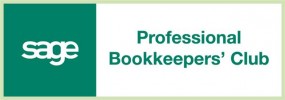Everyone knows that money is the lifeblood of a business but many do not grasp that invoicing if the heart that pumps it through the business body.
The majority of business owners would much rather be doing something other than processing invoices. However without efficient and effective invoicing a business can soon experience cash flow problems and start to go downhill.
An invoice from your business to your customer should have the appearance of something more than just a document asking them to pay up. Even though that’s exactly what it is.
You can also use your invoices as a tool for Advertising, PR, Marketing and even Customer Testimonials (beware this last one if you have pricing band structures for different customers). Great ideas, as long as the basics are in place and you follow a few ‘best practices’:
1 – Their Details & Your Details. Addresses, phone numbers, email addresses are of course important. It’s also a good idea to include the name of the person that is specifically dealing with the account payments. In an office of three or more people it should prevent an invoice being passed around for weeks on end.
2 – Itemised List of Services/Goods. The payment request is more likely to be paid on time if the invoice is specific. Particularly in a large company. As an example ‘Web Design’ isn’t as good as ‘Design of 4 page static website for new range of Pet Food products’. Generic may be good but specifics waste less time for your customer to dig around their own records to match the invoice. This means that the person carrying out the administration of your invoice has specific information they can match straight away, rather than continuously putting it to the bottom of the pile to ‘do later’.
3 – Include Your Terms. If the payment terms are 30 days then say so. It should also be shown what the penalty may be if payment is late. A rock steady paper trail is crucial if a problem occurs at a later date.
4 – Let Them Know How to Pay You. If you prefer BACs say that this is preferred. But always give a second option.
5 – Numbers, Numbers, Records and Books! An invoice reference number is vital. Many large PLC accounts departments will not even begin to process payment if there is no reference number. Will your customers administrator phone you up and ask for one? Unlikely! Also, for HMRC purposes, you are supposed to keep an invoice reference system.
6 – Thank Them and Ask Them to Thank You. Always thank them in advance for a prompt payment. You should also consider asking them for a testimonial, perhaps emailed so that it can be pasted on to your website.
7 – Invoices for Marketing. Most accounting software packages will allow you to customise the design of the invoice. Put your own logo on it and perhaps a corporate strapline. An invoice will speak volumes about how you go about getting and keeping business.
8 – Customer Purchase Order Reference: If your customer generates a Purchase Order Reference, make sure that you note that reference in an obvious place on your invoice. This makes it easier for your customer to match your invoice off against their records and you get paid quicker.
9 – Invoice Delivery: Where possible, email your invoicing to the client and have your email settings requesting a delivery and read receipt. Much more effective, cheaper and traceable that the Royal Mail. If your client insists on a hard copy, then send this as well as the email.
10 – Statements. Having a statement template reflecting your corporate style that lists the due invoices and the aged periods they are in can be also be a good way for the customers administrator of your invoicing to match and find any missing invoices. Statements should be sent the last working day of each calendar month.


